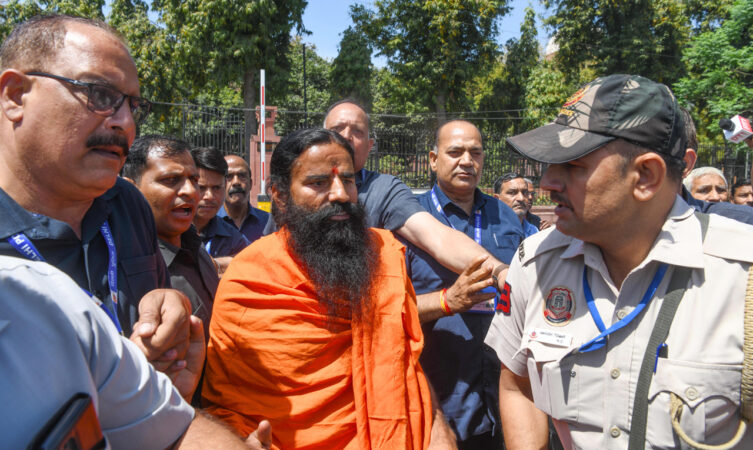Millions of people become victims of blatantly false advertisements by companies offering miraculous cures for various ailments
Published Date – 12 April 2024, 11:54 PM

Yoga Guru Baba Ramdev leaves the Supreme Court after appearing in the misleading advertisement case filed against the Patanjali Ayurveda, in New Delhi on Tuesday. He tendered an unconditional apology before the Supreme Court for violating the apex courts order for misleading advertisements of Patanjalis medicinal products.
The Supreme Court’s blistering takedown of Patanjali Ayurveda, founded by Yoga guru Baba Ramdev, for making misleading claims about their products has brought into focus an important issue that has a direct bearing on public health. Millions of gullible people in India become victims of blatantly false advertisements by companies offering miraculous cures for various ailments. A majority of them sell dubious ayurvedic products that contain heavy metals, putting public health at risk. The apex court lambasted Patanjali for publishing misleading advertisements and banned it from marketing its products. When the company ignored the court’s directive and continued with its campaign of not only boasting about its products but also belittling allopathic medicines, the SC took serious note of it. The court refused to accept the unconditional apology offered by Ramdev and the company’s managing director Acharya Balkrishna and censured them for wilful, deliberate, repeated violation of the court orders. The Indian Medical Association (IMA) filed a petition before the apex court in August 2022 after Patanjali published an advertisement questioning the efficacy of allopathy medicines and accusing the pharma industry of spreading misconceptions. The IMA claimed that these attacks against modern medicine through a continuous, systematic and unabated spread of misinformation came alongside Patanjali’s own efforts to make false and unfounded claims about curing certain diseases through the use of Patanjali products. Ramdev himself promoted a smear campaign against the Covid vaccination drive and modern medicine.
The ayurvedic firm’s advertisements were in direct violation of the Drugs & Other Magical Remedies Act, 1954 (DOMA), and the Consumer Protection Act, 2019 (CPA). The top court also lashed out at the Uttarakhand State Licensing Authority for not taking action against Patanjali Ayurveda. It must be pointed out that there has been very limited research into traditional and ayurvedic medicines. Unlike the stringent criteria of clinical trials for modern medicines governed by the Drug Controller General of India, the norms for other medical systems are lax. Also, the adverse side-effects of ayurvedic drugs are not reported. If proper scientific clinical trials and post-marketing surveillance are carried out, it is possible to put the adverse effects in the public domain, like how it is done for allopathic medicines. Ayurveda is an ancient medicine system that originated in India and is detailed in Sushruta Samhita and Charaka Samhita. Ayurveda is based on the premise that diseases are the result of an imbalance between doshas — vata, pitta and kapha. While modern medicine first investigates and establishes the diagnoses and then treats them, ayurveda relies more on treating the symptoms. Because of the widespread use of allopathic medicines, there has been much scientific investment in the understanding of disease causation and its treatment. Consequently, we know the chemical structure of each medicine, the exact site of its action and its side effects. The same cannot be said about ayurvedic medicines.




